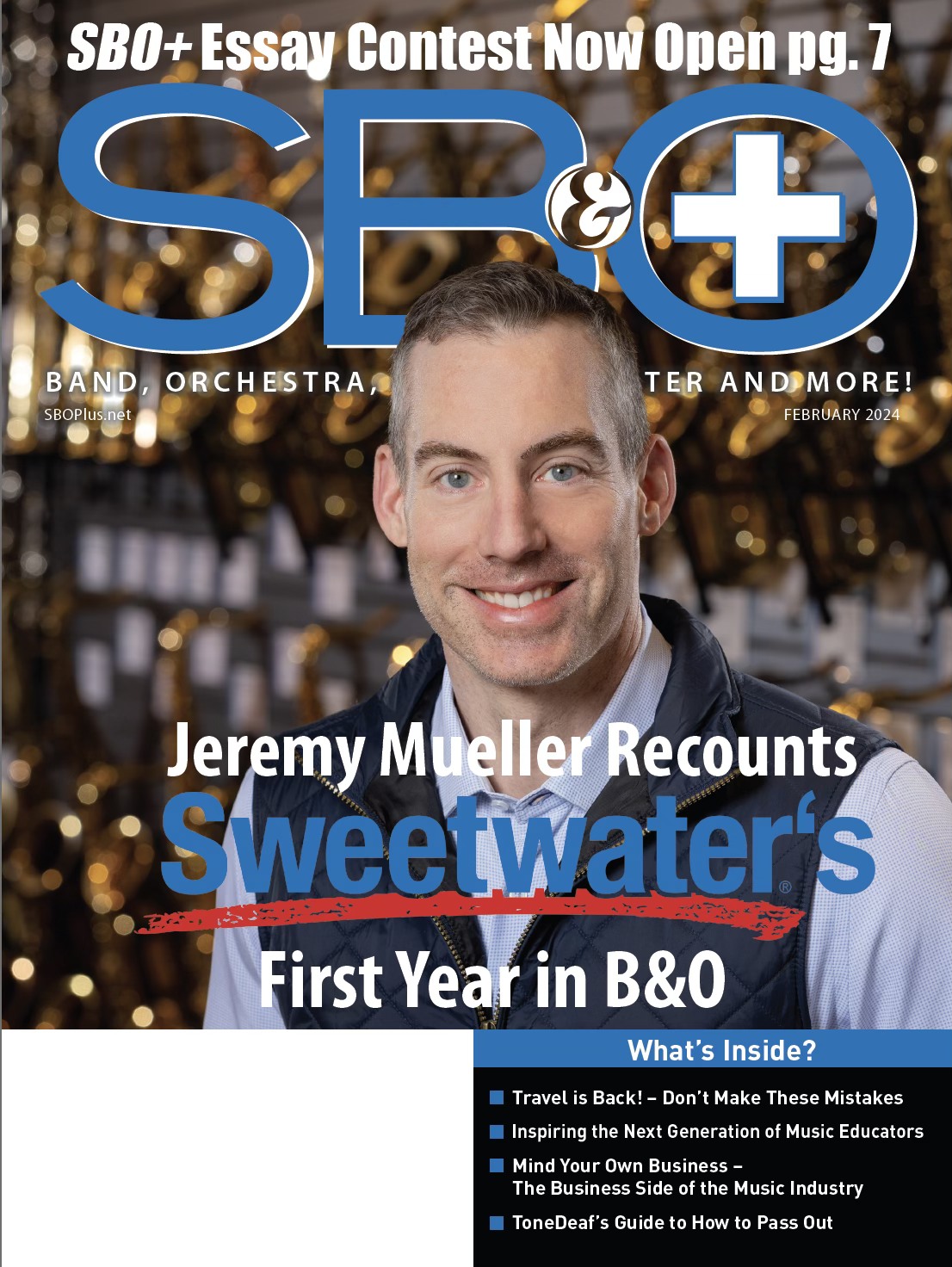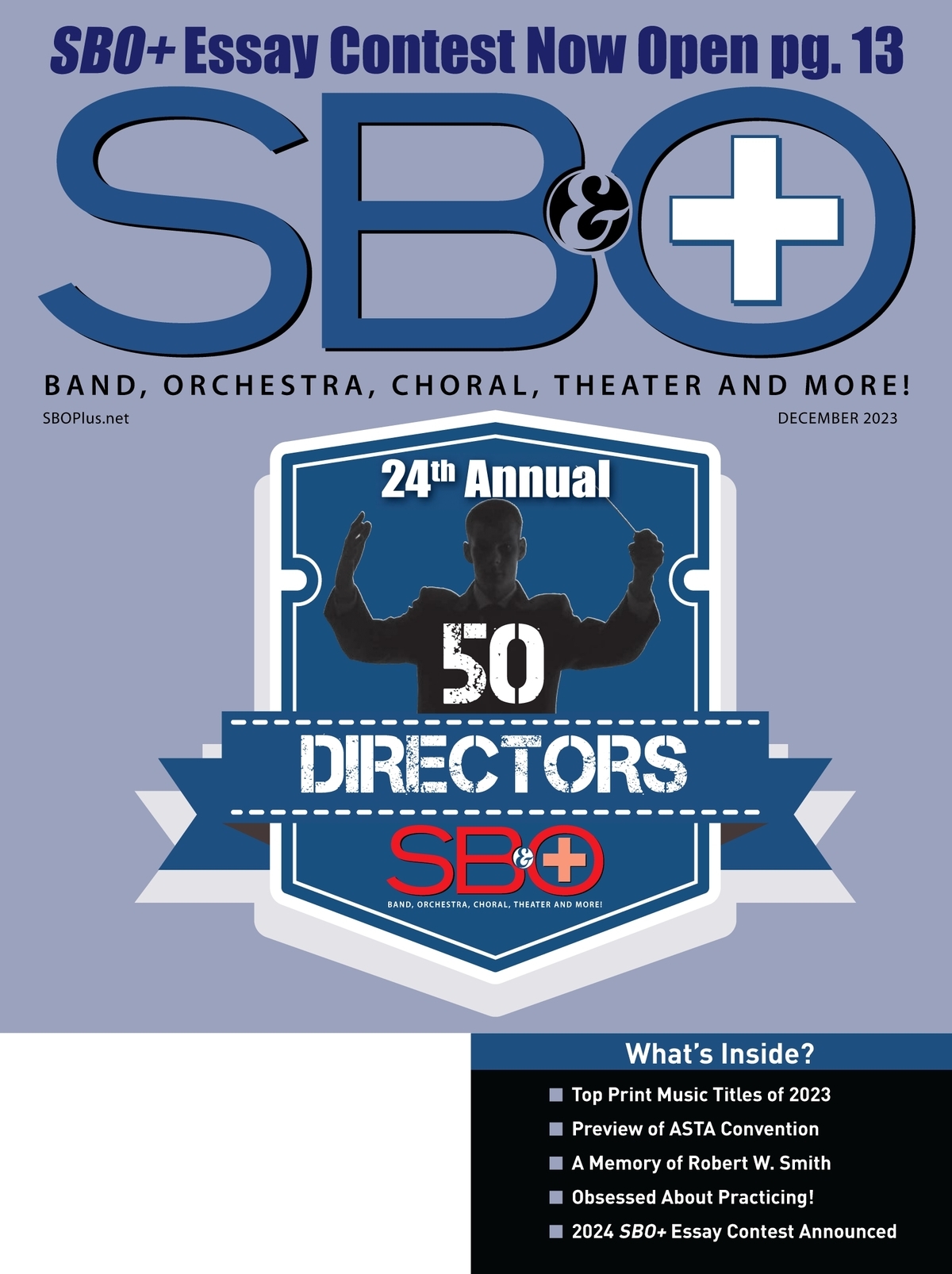EDUCATORS SUBSCRIBE FOR AS LOW AS $0.00! CLICK HERE!
 In 2007, when Eric Akers took over the music program at Barboursville Middle School in Barboursville, West Virginia, only 11 students participated in the school orchestra. Akers worked hard to expand the program, but he did not have enough instruments to accommodate the demand. Up to a half-dozen students shared one of the few violins and cellos that belonged to the school and no one could take them home to practice.
In 2007, when Eric Akers took over the music program at Barboursville Middle School in Barboursville, West Virginia, only 11 students participated in the school orchestra. Akers worked hard to expand the program, but he did not have enough instruments to accommodate the demand. Up to a half-dozen students shared one of the few violins and cellos that belonged to the school and no one could take them home to practice.
“In our concerts, we had to take turns playing the songs because we didn’t have enough instruments for everyone to play at the same time,” said Akers.
Though the school board supported his efforts, money remained tight. After Akers created a strings program and attracted a total of 70 music students, Randall Reid-Smith, commissioner of the state’s Division of Culture and History, contacted him to help apply for a VH1 Save The Music Foundation grant that delivered $30,000 worth of new, quality instruments, including cellos, violas, and violins.
Now, around 300 students participate in the music program. “The grant enabled me to have true sections in the orchestra with students playing their instrument of choice instead of forcing them to play whatever instrument we had left over,” said Akers. Parents have gotten on board, too, and are donating everything from $1,000 violas to inexpensive violins bought on eBay to black and white outfits that make the group look sharp.
“After realizing the benefits of music education and having an individual instrument to practice on, many of them started purchasing instruments for their children’s continued study after middle school,” he said.
Yamaha representatives played a key role in bringing together West Virginia officials and the VH1 Save The Music Foundation to launch this innovative statewide initiative. Since the program launched in 2007, it has distributed $1.53 million worth of new instrument grants to 51 public schools in 40 counties throughout West Virginia. Building on a program that began in two schools, added partners including local donors, manufacturers like Yamaha, school districts, and state officials, VH1 Save The Music is helping to bolster music education by providing new instruments and ensuring that dedicated, certified teachers are working in every public school in all 55 counties within the mountainous, rural state. VH1 Save the Music Foundation provides the initial grant and West Virginia Division of Cultural and History identifies local supporters to provide matching funds so that there is no cost to individual schools.
 “Music is very important to every one of these communities and that is evident by the way parents, students, teachers, and administrators have responded to support music programs in the schools,” said Mike Bates, who recently retired from Yamaha and helped implement the program during its early years. “This is an absolutely life-changing trend that is happening there.”
“Music is very important to every one of these communities and that is evident by the way parents, students, teachers, and administrators have responded to support music programs in the schools,” said Mike Bates, who recently retired from Yamaha and helped implement the program during its early years. “This is an absolutely life-changing trend that is happening there.”
The program’s genesis dates to 1996, when the Lyell B. and Patricia K. Clay Foundation contacted Yamaha to help donate new Disklavier performance-reproducing pianos and other equipment to state colleges and universities that trained music teachers. Yamaha sponsored seminars for educators and donated electronic keyboards to teachers, but it became apparent that the entire system of music education statewide needed an overhaul. At the time, most elementary and middle school programs had deteriorated to such a level that many schools did the best they could with dated and damaged instruments –or no instruments at all– and districts had trouble keeping bands and classes afloat.
Eventually, Yamaha, state officials, and the Foundation decided to expand the early program that provided digital keyboards to include band, strings, and orchestral instruments to qualified schools. Clay died in 2007 and Yamaha introduced state officials to VH1 Save the Music Foundation – a not-for-profit organization dedicated to restoring and sustaining instrumental music education in public schools across the country and raising awareness about the importance of music education – which administered the grants. The Clay Foundation continues to provide leadership support for new programs and for repairing student instruments during the school year.
To participate in the VH1 Save The Music program, school districts must hire full-time, certified music teachers to serve their students. This is the first statewide initiative for the Foundation, which only funds elementary and middle schools.
“We believe that music education should start early,” said Chiho Feindler, grantee and compliance manager at VH1 Save the Music Foundation, who administers the program in West Virginia, as well as other regions across the United States. “You don’t start math classes in high school and some of our high school grants in the past ended up unsuccessful. How many 16-year-olds want to play ‘Hot Cross Buns?’ There are other great organizations, like Mr. Holland’s Opus Foundation, that help service high schools.”
Building a base in the elementary and middle school levels has paid dividends, said Reid-Smith at the state’s Division of Culture and History, a major champion of the program. High school bands throughout the state participate in a marching band competition and the caliber of play and performance has increased over the years.
“It is so vital that our administrators and legislators are aware of the important benefits of music and the arts to students’ development,” said Reid-Smith. “There is no better way to build pride among local communities than to have bands perform at local parades or festivals. Bands used to perform to unengaged crowds at football games, but now they get as enthusiastic applause as the players.”
The key is to go beyond throwing money at the problem and find dedicated teachers who can help create future audiences for the arts. “The solution is not to just put a free instrument in a child’s hands, it is offering broad-based support to connect the dots so that kids stay busy and committed to their communities,” he said. “Those kids who are not involved with athletics or the arts have too much time on their hands and they often end up getting in trouble.”

Even Feindler, based in New York City, who served as a judge for the statewide marching band competition last fall, has noticed a new energy created by improving music education. “Statewide, this has been such a transforming thing,” she said. “We get emails from schools that heard about the program and ask ‘when can we get things rolling?’ Of all the things talked about in the community, music education was generally not the first topic raised at the dinner table, but now parents, teachers, students, government officials, and the private sector really value it.”
Barbara Green, who taught music at the Harman School in Harman, West Virginia, received one of the first grants and recalled her early struggles. “When I was hired, there were barely any instruments to use and I struggled to get a music program going,” she said. In addition to being burdened by a lack of instruments, only 10 out of 200 children at the K-12 school participated in the band and the local board of education threatened to cut her position to half time. When the VH1 Save the Music Foundation sent a letter to the school board stating that the school would be ineligible for the grant, they reinstated Green’s full-time position and she built a program that served 50 enthusiastic band students.
At George Washington Middle School in Eleanor, a remote section of the state near the Ohio border that enrolls around 300 students, Leslie Baker took over the music program in 2013. Band membership is up 50 percent now that she received a grant to replace old and worn instruments with eight flutes, eleven clarinets, three alto saxophones, six trumpets, four trombones, a glockenspiel with stand and mallets, a bass drum with stand and mallets, and a snare drum with a stand.
“Morale and dedication to the band program is at an all-time high right now, which has increased their abilities,” said Baker. “The kids are interested in playing harder music and I am happy to give it to them! Parents, administrators, and the community are very vocal about the improvements they’ve seen in the band program. This has been a wonderful blessing.”
She has taken the opportunity to expand the band’s performance schedule and improve the musical life of the community. They play at every home football game, at a Veteran’s Day event sponsored by a local pharmacy and at winter and spring concerts. Trios and quartets also perform at nursing homes and the local shopping center.
One of the grant’s main benefits has been to provide quality instruments to low-income students. “Lack of money should never keep a child from playing in band,” said Baker. “Having the ability to reach out to more kids and include all who are interested in participating meant the world to me. I have already seen increased retention in band at both the middle and high school levels and increased interest and dedication to the program that has come with that growth.”

Green and Baker’s experience prove that the program can be successful even in remote rural locations. With the full support of local and state officials, the initiative has galvanized a large cross section of constituents. United States Senator Joe Manchin and his wife, Gayle, have reached out to individuals, businesses, and non-profit organizations to contribute. Governor Earl Ray Tomblin and First Lady Joanne Jaeger Tomblin have also worked hard to implement the program and revitalize music education in the state.
“Music and arts education is so much more than learning notes and marching bands,” said Mrs. Tomblin. “It is about the growth and development of our students. [It is] that part of you that brings [the] heart and soul to life.”






